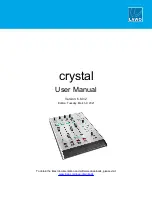Reviews:
No comments
Related manuals for invitrogen Neon

INFERNO
Brand: JB Systems Pages: 12

ORPscan10
Brand: Bante Instruments Pages: 6

D30R
Brand: Baker Pages: 82

crystal
Brand: LAWO Pages: 459

60700
Brand: earline Pages: 13

QuickLock
Brand: OAKWORKS Pages: 2

pHTestr 30
Brand: Oakton Pages: 2

pH 5+
Brand: Oakton Pages: 2

OMC PC-100
Brand: O2matic Pages: 4

ME-9430
Brand: PASCO Pages: 30

MAGNUM 5
Brand: Cannon Pages: 70

SIP II
Brand: Bavis Pages: 8

Alcotest 7410 GLC
Brand: Dräger Pages: 15

HRH 02 Series
Brand: enz Pages: 40

YT6701
Brand: Cotech Pages: 44

SciCan STATIM 2000S
Brand: Coltene Pages: 45

63800 Series
Brand: Chroma Pages: 198

108-3654
Brand: Toro Pages: 2

















